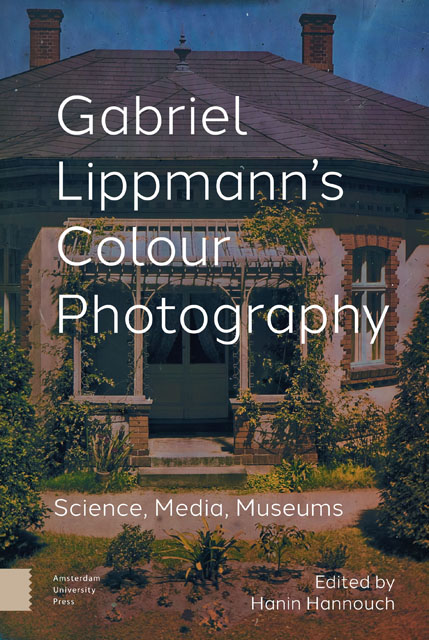Book contents
- Frontmatter
- Table of contents
- Gabriel Lippmann’s Colour Photography: A Critical Introduction
- Part I The Science of Colour Photography and the Colour Photography of Science
- Part II Media History, Aesthetics, and Culture
- Part III Contemporary Reception and Future Trajectories
- Afterword: Building Bridges over Standing Waves
- Index
6 - Richard Neuhauss’s Stuffed Parrot: Interferential Colour Photography, Taxidermy, and Projection
Published online by Cambridge University Press: 16 November 2022
- Frontmatter
- Table of contents
- Gabriel Lippmann’s Colour Photography: A Critical Introduction
- Part I The Science of Colour Photography and the Colour Photography of Science
- Part II Media History, Aesthetics, and Culture
- Part III Contemporary Reception and Future Trajectories
- Afterword: Building Bridges over Standing Waves
- Index
Summary
Abstract
This article places doctor of medicine, anthropologist, and photographer Richard Neuhauss's (1855–1915) practice of the Lippmann process in relation to other media. It focuses on the importance of taxidermy for the choice of an adequate test object for interferential colour photography and the role the stuffed superb parrot, a colonial animal-object par excellence, played in Neuhauss's experimental practice. Moreover, this text examines the various optical media needed to present the interferential colour photograph to individual or collective spectators in Imperial Germany, especially projection, with whom it had a special relationship.
Keywords: Richard Neuhauss, taxidermy, test object, projection, interferential colour photography, optical media
Interferential colour photography emerged in relation to other media at the turn of the last century – media that were instrumental to the production and the dissemination of knowledge about it – and yet current scholarship in photographic history has rarely considered this interconnected matrix (Leonardi and Natale 2018, 2). Situating Lippmann photography within a wider constellation of technologies is essential for shedding its double historiographic isolation. First, colour photography as such is marginalised within the “general” history of photography. Second, the segregation between “direct” and “indirect” colour photographic processes has divided them into two different temporal constructions, posited as epistemologically at odds with each other. The Lippmann process is thus considered a challenging and cumbersome “direct method” that produces colour photographs by resolving light waves. Within this paradigm, its position is awkward. It is considered the teleological dead-end street of colour photography, part of the “prehistory” and not the “actual” history of colour. It is also a mere “early search” for or a precursor to financially viable “indirect” methods (Isler-de-Jongh 1994, 111–12) such as three-colour photography and the autochrome, which reconstruct all shades based on three primary ones. This position has hindered the emergence of interferential colour photography as an object of historical inquiry, a narrative that urgently needs revisiting.
To overcome these conceptual and teleological limitations at the core of colour photography's historiography, it is essential to be sensitive to relationships rather than to ruptures between various colour processes. This move away from a media-specific approach to interferential photography, by which it operates only within its own expressive capacities to remain “pure,” is the stepping stone for a broader transformation of how its history will be written in the future.
- Type
- Chapter
- Information
- Gabriel Lippmann's Colour PhotographyScience, Media, Museums, pp. 159 - 184Publisher: Amsterdam University PressPrint publication year: 2022



